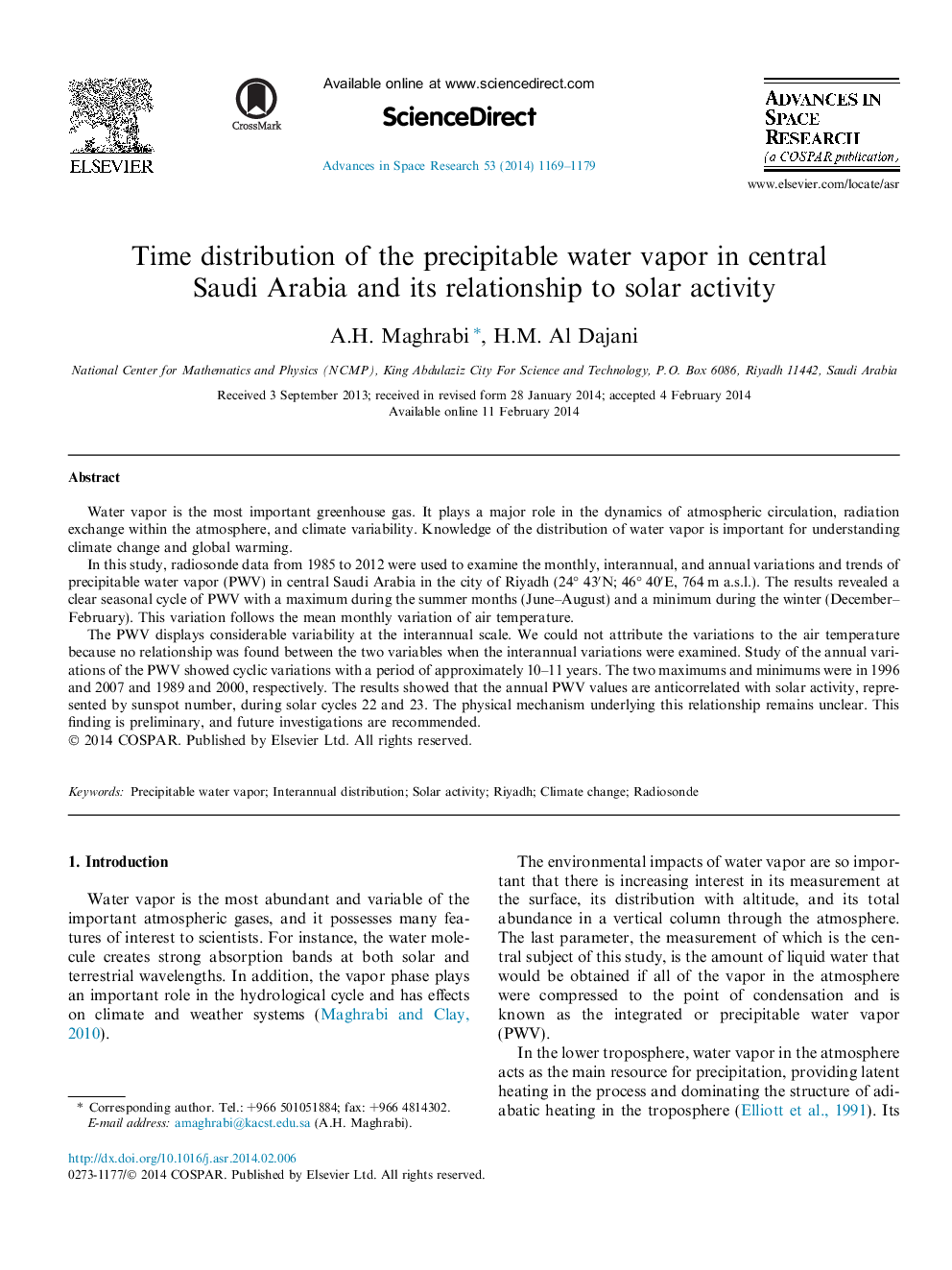| Article ID | Journal | Published Year | Pages | File Type |
|---|---|---|---|---|
| 1763761 | Advances in Space Research | 2014 | 11 Pages |
Water vapor is the most important greenhouse gas. It plays a major role in the dynamics of atmospheric circulation, radiation exchange within the atmosphere, and climate variability. Knowledge of the distribution of water vapor is important for understanding climate change and global warming.In this study, radiosonde data from 1985 to 2012 were used to examine the monthly, interannual, and annual variations and trends of precipitable water vapor (PWV) in central Saudi Arabia in the city of Riyadh (24° 43′N; 46° 40′E, 764 m a.s.l.). The results revealed a clear seasonal cycle of PWV with a maximum during the summer months (June–August) and a minimum during the winter (December–February). This variation follows the mean monthly variation of air temperature.The PWV displays considerable variability at the interannual scale. We could not attribute the variations to the air temperature because no relationship was found between the two variables when the interannual variations were examined. Study of the annual variations of the PWV showed cyclic variations with a period of approximately 10–11 years. The two maximums and minimums were in 1996 and 2007 and 1989 and 2000, respectively. The results showed that the annual PWV values are anticorrelated with solar activity, represented by sunspot number, during solar cycles 22 and 23. The physical mechanism underlying this relationship remains unclear. This finding is preliminary, and future investigations are recommended.
